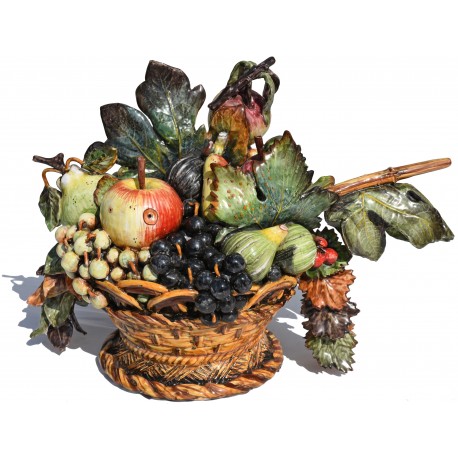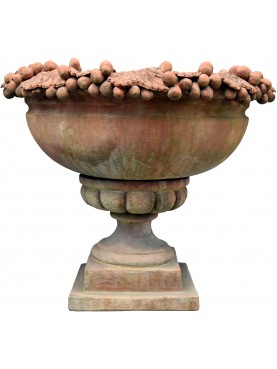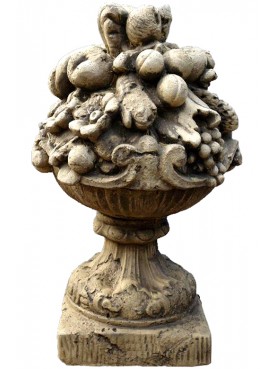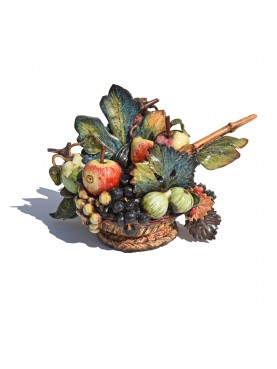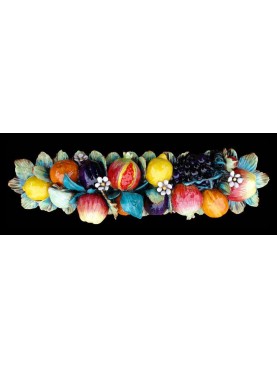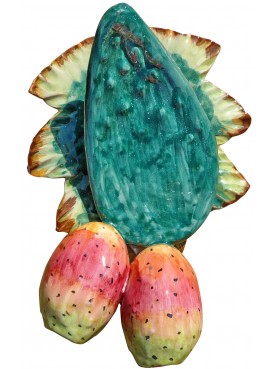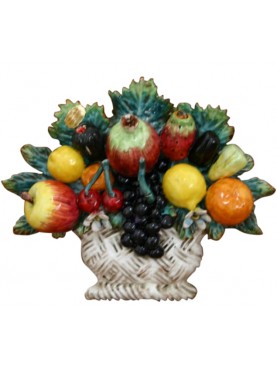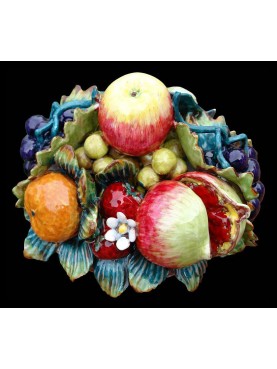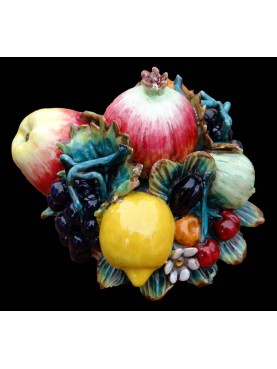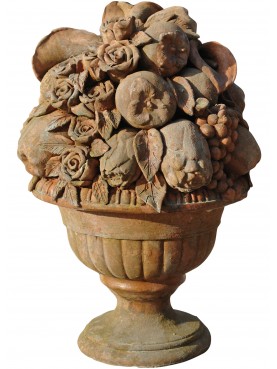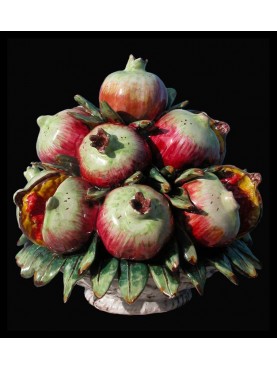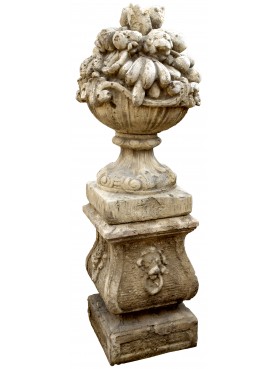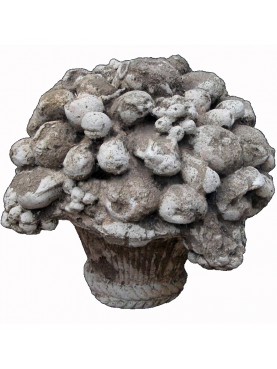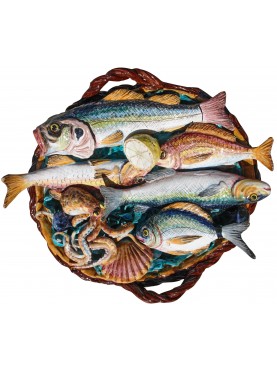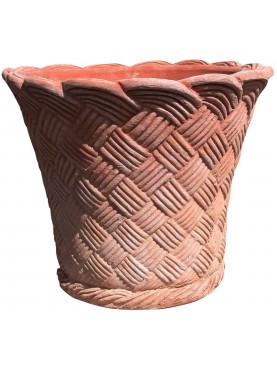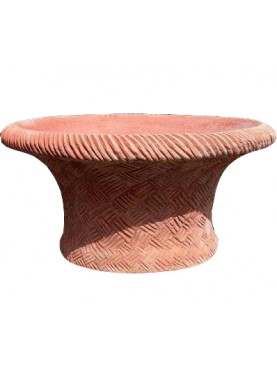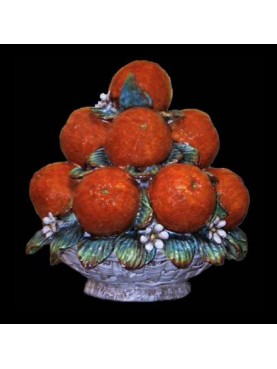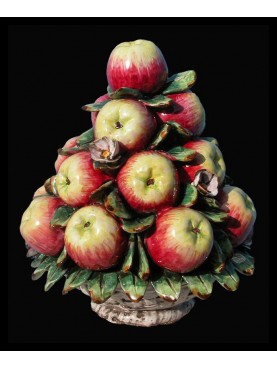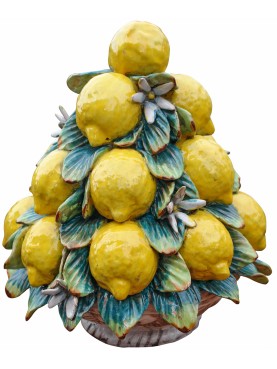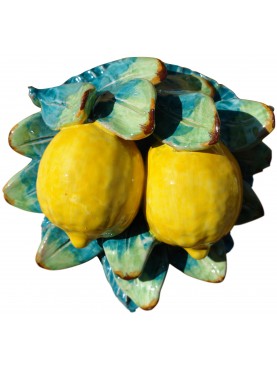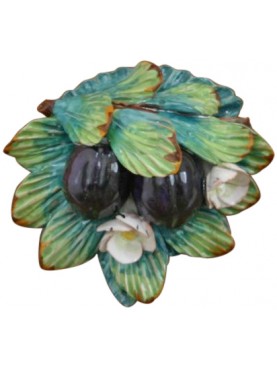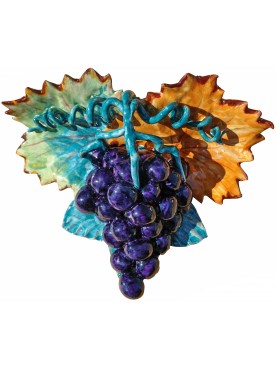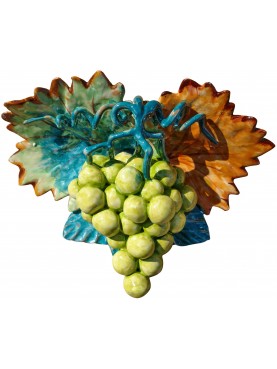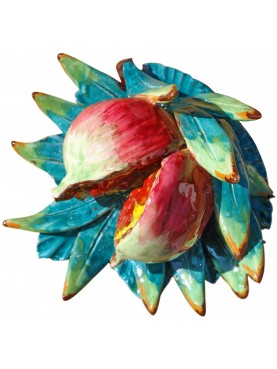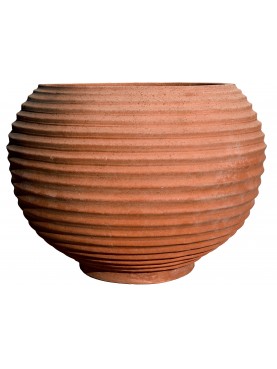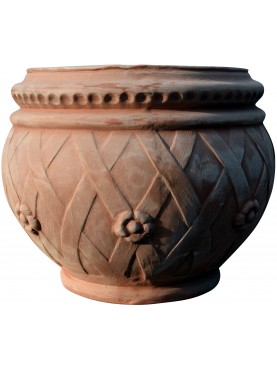Large Hand-made majolica Caravaggio's fruits basket
Large Hand-made majolica Caravaggio's fruits basket
8140
New
Academic copy of the famous "Caravaggio" fruit basket before 1595.
Handmade in Italy, beautiful majolica artefact. Each fruit and the basket itself are entirely formed by hand, therefore you will never have a copy identical to the other.
This is one of the most valuable "artisan" items that we have in the catalog.
2 Available
Data sheet
| Height | 15.75 in | 40 cm |
| Width | 21.65 in | 55 cm |
| Depth | 11.81 in | 30 cm |
| Weight | 11.02 lbs | 5 Kg |
| Manufacturing | Made in Italy | |
| Material | Majolica | |
| Historical references | Framework by Caravaggio, c. 1599 |
More info
Basket of Fruit (c.1599) is a still life painting by the Italian Baroque master Michelangelo Merisi da Caravaggio (1571–1610), which hangs in the Biblioteca Ambrosiana (Ambrosian Library), Milan.
It shows a wicker basket perched on the edge of a ledge. The basket contains a selection of summer fruit:
... a good-sized, light-red peach attached to a stem with wormholes in the leaf resembling damage by oriental fruit moth (Orthosia hibisci). Beneath it is a single bicolored apple, shown from a stem perspective with two insect entry holes, probably codling moth, one of which shows secondary rot at the edge; one blushed yellow pear with insect predations resembling damage by leaf roller (Archips argyospita); four figs, two white and two purple—the purple ones dead ripe and splitting along the sides, plus a large fig leaf with a prominent fungal scorch lesion resembling anthracnose (Glomerella cingulata); and a single unblemished quince with a leafy spur showing fungal spots. There are four clusters of grapes, black, red, golden, and white; the red cluster on the right shows several mummied fruit, while the two clusters on the left each show an overripe berry. There are two grape leaves, one severely desiccated and shriveled while the other contains spots and evidence of an egg mass. In the right part of the basket are two green figs and a ripe black one is nestled in the rear on the left. On the sides of the basket are two disembodied shoots: to the right is a grape shoot with two leaves, both showing severe insect predations resembling grasshopper feeding; to the left is a floating spur of quince or pear.
Much has been made of the worm-eaten, insect-predated, and generally less than perfect condition of the fruit. In line with the culture of the age, the general theme appears to revolve about the fading beauty, and the natural decaying of all things. Scholars also describe the basket of fruit as a metaphor of the Church.
A recent X-ray study revealed that it was painted on an already used canvas painted with grotesques in the style of Caravaggio's friend Prospero Orsi, who helped the artist in his first breakthrough into the circles of collectors such as his first patron, Cardinal Francesco Maria Del Monte, around 1594/1595, and who remained close to him for many years thereafter.
Scholars have had more than their usual level of disagreement in assigning a date to the painting: John T. Spike places it in 1596; Catherine Puglisi believes that 1601 is more probable; and practically every year in between has been advanced. Puglisi's reasoning seem solid, (the basket in this painting seems identical with the one in the first of Caravaggio's two versions of Supper at Emmaus - even the quince seems to be the same piece of fruit), but no consensus has emerged.
In 1607 it was part of Cardinal Federico Borromeo’s collection, a provenance which raises the plausibility of a conscious reference to the Book of Amos. Borromeo, who was archbishop of Milan, was in Rome approximately 1597-1602 and a house guest of Del Monte in 1599. He had a special interest in the Northern European painters such as Paul Bril and Jan Brueghel the Elder, who were also in Rome at the time, (indeed, he took Breughel into his own household), and in the way they did landscapes and flowers in paintings as subjects in their own right, something not known at the time in Italian art. He would have seen the way Caravaggio did still life as incidental accessories in paintings such as Boy Bitten by a Lizard, Bacchus, in Del Monte's collection, and The Lute Player in the collection of Del Monte's friend Vincenzo Giustiniani. The scholarly Giustiniani wrote a treatise on painting years later, wherein, reflecting the hierarchical conventions of his day, he placed flowers "and other tiny things" only fifth on a twelve-scale register, but he said also that Caravaggio once said to him "that it used to take as much workmanship for him to do a good picture of flowers as it did to do one of human figures."
Like its doppelganger in Supper at Emmaus, the basket seems to teeter on the edge of the picture-space, in danger of falling out of the painting and into the viewer's space instead. In the Supper this is a dramatic device, part of the way in which Caravaggio creates the tension of the scene; here, trompe l'oeil seems to be almost the whole purpose of the painting, if we subtract the possible didactic element. But the single element that no doubt attracted its original owner, and still catches attention today, is the extraordinary quasi-photographic realism of the observation which underlies the illusionism. Basket of Fruit can be compared with the same artist's Still Life with Fruit (c. 1603), a painting which John Spike identifies as "the source of all subsequent Roman still-life paintings."
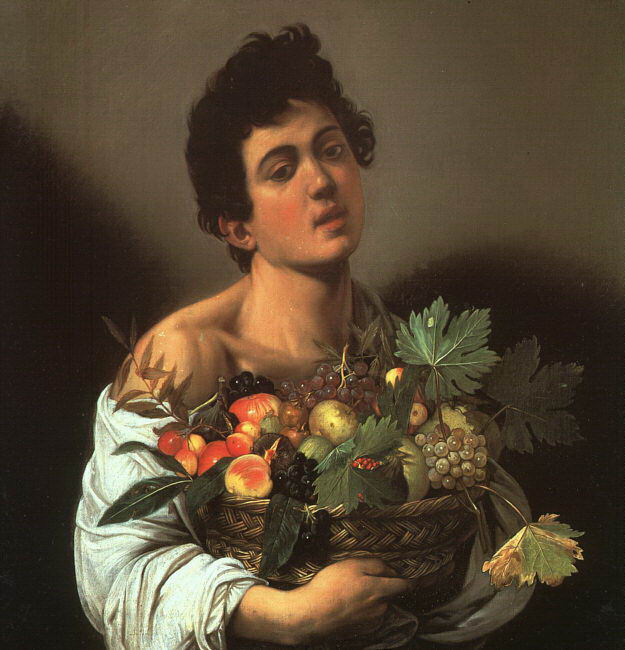
Boy With Basket of Fruit. By Michelangelo Merisi da Caravaggio - Before 1595 - Galleria Borghese, Roma
Michelangelo Merisi (Michele Angelo Merigi or Amerighi) da Caravaggio, (29 September 1571 – 18 July 1610) was an Italian painter active in Rome for most of his artistic life. During the final four years of his life he moved between Naples, Malta, and Sicily until his death. His paintings combine a realistic observation of the human state, both physical and emotional, with a dramatic use of lighting, which had a formative influence on Baroque painting.
Caravaggio employed close physical observation with a dramatic use of chiaroscuro that came to be known as tenebrism. He made the technique a dominant stylistic element, darkening shadows and transfixing subjects in bright shafts of light. Caravaggio vividly expressed crucial moments and scenes, often featuring violent struggles, torture, and death. He worked rapidly, with live models, preferring to forgo drawings and work directly onto the canvas. His influence on the new Baroque style that emerged from Mannerism was profound. It can be seen directly or indirectly in the work of Peter Paul Rubens, Jusepe de Ribera, Gian Lorenzo Bernini, and Rembrandt, and artists in the following generation heavily under his influence were called the "Caravaggisti" or "Caravagesques", as well as tenebrists or tenebrosi ("shadowists").
Caravaggio trained as a painter in Milan before moving in his twenties to Rome. He developed a considerable name as an artist, and as a violent, touchy and provocative man. A brawl led to a death sentence for murder and forced him to flee to Naples. There he again established himself as one of the most prominent Italian painters of his generation. He traveled in 1607 to Malta and on to Sicily, and pursued a papal pardon for his sentence. In 1609 he returned to Naples, where he was involved in a violent clash; his face was disfigured and rumours of his death circulated. Questions about his mental state arose from his erratic and bizarre behavior. He died in 1610 under uncertain circumstances while on his way from Naples to Rome. Reports stated that he died of a fever, but suggestions have been made that he was murdered or that he died of lead poisoning.
Caravaggio's innovations inspired Baroque painting, but the Baroque incorporated the drama of his chiaroscuro without the psychological realism. The style evolved and fashions changed, and Caravaggio fell out of favor. In the 20th century interest in his work revived, and his importance to the development of Western art was reevaluated. The 20th-century art historian André Berne-Joffroy stated, "What begins in the work of Caravaggio is, quite simply, modern painting."

